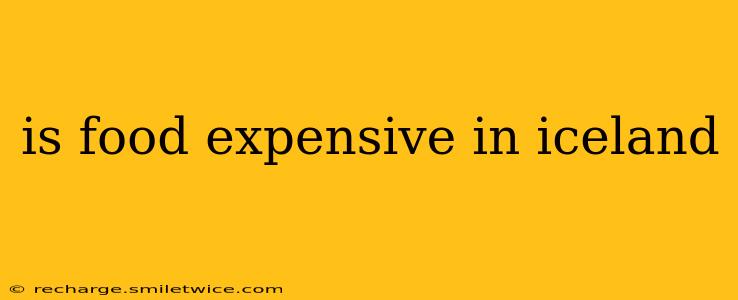Yes, food in Iceland is notoriously expensive. This isn't just a perception; it's a reality borne out by various factors, making Iceland one of the most expensive countries globally for groceries and dining out. But understanding why it's so expensive allows for better budgeting and planning your trip. This guide will delve into the reasons behind the high costs and offer tips for managing your food budget while exploring this beautiful island nation.
Why is Food so Expensive in Iceland?
Several interconnected factors contribute to Iceland's high food prices:
-
High Import Costs: Iceland is an island nation, geographically isolated. Most food products aren't grown locally, leading to significant import costs for transportation, customs duties, and handling. This impacts the price of nearly everything, from fresh produce to processed goods.
-
Limited Domestic Production: Iceland's climate and short growing season restrict the range of agricultural products that can be cultivated domestically. This reliance on imports exacerbates the problem of high costs.
-
Strong Icelandic Króna (ISK): While fluctuations occur, the ISK's relative strength against other currencies can make imported goods more expensive for Icelandic consumers.
-
High Labor Costs: Iceland has a strong social safety net and high labor costs, which translate into higher prices for food production and retail. This affects everything from farm workers to supermarket employees.
-
Value-Added Tax (VAT): Iceland's VAT rate adds to the final price of goods, including food.
What are the Most Expensive Food Items in Iceland?
While everything is relatively expensive, some items stand out as particularly pricey:
-
Fresh Produce: Fruits and vegetables are among the most costly items due to reliance on imports and storage challenges.
-
Meat: While Iceland has a domestic lamb and beef industry, the costs are still relatively high.
-
Dairy Products: While Iceland produces its own dairy, the cost is still higher than in many other countries.
-
Imported Goods: Specialty foods and international brands often come with a hefty price tag reflecting import costs and distribution networks.
How Can I Save Money on Food in Iceland?
Despite the high prices, there are ways to manage your food budget:
-
Shop at Discount Supermarkets: Stores like Bonus and Krónan offer lower prices than more upscale options.
-
Cook Your Own Meals: Eating out frequently will quickly drain your budget. Preparing meals at your accommodation will significantly reduce costs.
-
Take Advantage of Local Produce When Available: Seasonal fruits and vegetables, when available locally, will often be slightly more affordable.
-
Look for Deals and Specials: Check for weekly deals and discounts offered by supermarkets.
-
Pack Snacks and Some Non-Perishables: Bringing some non-perishable items from home can save on small purchases that add up over time.
-
Eat at Local Eateries: While fine dining is expensive, smaller, local restaurants often offer more affordable and authentic Icelandic food experiences.
What are Some Affordable Food Options in Iceland?
While expensive overall, some foods are relatively more affordable than others:
-
Skyr: This Icelandic yogurt is a local staple and a relatively inexpensive source of protein.
-
Fish: Icelandic seafood, particularly when purchased locally or at fish markets, can be a cost-effective and delicious option.
-
Bread: While not the cheapest in the world, bread is often a more budget-friendly option than other items.
Is Eating Out in Iceland Expensive?
Yes, dining out in Iceland can be very expensive, particularly at restaurants geared toward tourists. However, you can find more reasonably priced meals by looking for local restaurants or cafes.
What are the alternatives to eating out?
Self-catering is your best bet for managing food costs in Iceland. This means making the most of your accommodation's kitchen facilities and buying groceries from local supermarkets.
This guide should provide a clear picture of food costs in Iceland. By understanding the factors behind high prices and employing some savvy budgeting strategies, you can still enjoy delicious food while exploring this magnificent country. Remember to plan ahead, explore your options, and enjoy the culinary experiences available within your budget.
